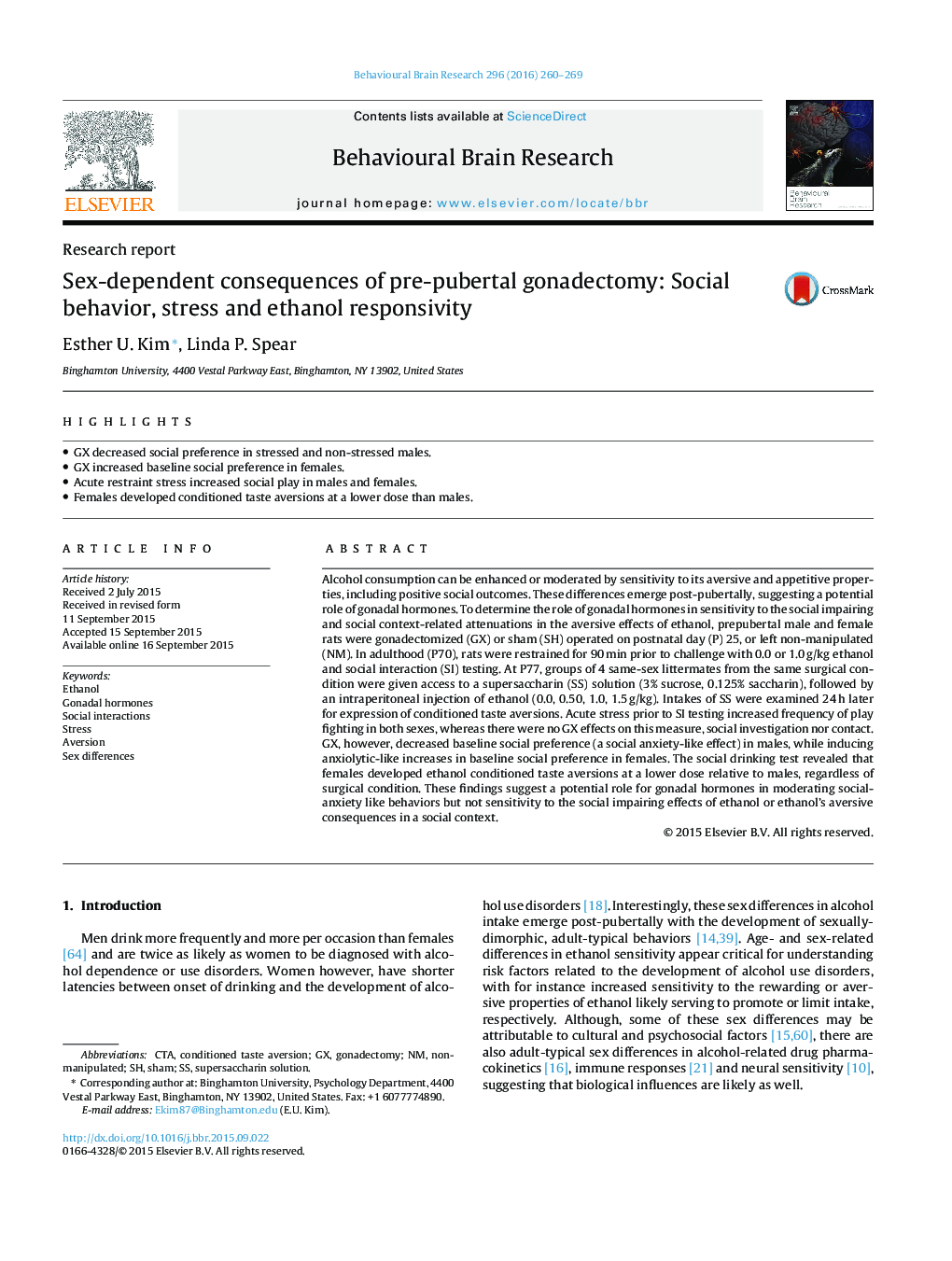| کد مقاله | کد نشریه | سال انتشار | مقاله انگلیسی | نسخه تمام متن |
|---|---|---|---|---|
| 4312337 | 1612936 | 2016 | 10 صفحه PDF | دانلود رایگان |
• GX decreased social preference in stressed and non-stressed males.
• GX increased baseline social preference in females.
• Acute restraint stress increased social play in males and females.
• Females developed conditioned taste aversions at a lower dose than males.
Alcohol consumption can be enhanced or moderated by sensitivity to its aversive and appetitive properties, including positive social outcomes. These differences emerge post-pubertally, suggesting a potential role of gonadal hormones. To determine the role of gonadal hormones in sensitivity to the social impairing and social context-related attenuations in the aversive effects of ethanol, prepubertal male and female rats were gonadectomized (GX) or sham (SH) operated on postnatal day (P) 25, or left non-manipulated (NM). In adulthood (P70), rats were restrained for 90 min prior to challenge with 0.0 or 1.0 g/kg ethanol and social interaction (SI) testing. At P77, groups of 4 same-sex littermates from the same surgical condition were given access to a supersaccharin (SS) solution (3% sucrose, 0.125% saccharin), followed by an intraperitoneal injection of ethanol (0.0, 0.50, 1.0, 1.5 g/kg). Intakes of SS were examined 24 h later for expression of conditioned taste aversions. Acute stress prior to SI testing increased frequency of play fighting in both sexes, whereas there were no GX effects on this measure, social investigation nor contact. GX, however, decreased baseline social preference (a social anxiety-like effect) in males, while inducing anxiolytic-like increases in baseline social preference in females. The social drinking test revealed that females developed ethanol conditioned taste aversions at a lower dose relative to males, regardless of surgical condition. These findings suggest a potential role for gonadal hormones in moderating social-anxiety like behaviors but not sensitivity to the social impairing effects of ethanol or ethanol’s aversive consequences in a social context.
Journal: Behavioural Brain Research - Volume 296, 1 January 2016, Pages 260–269
